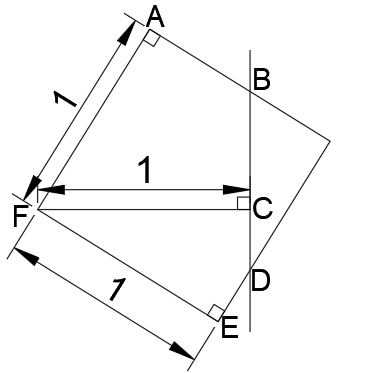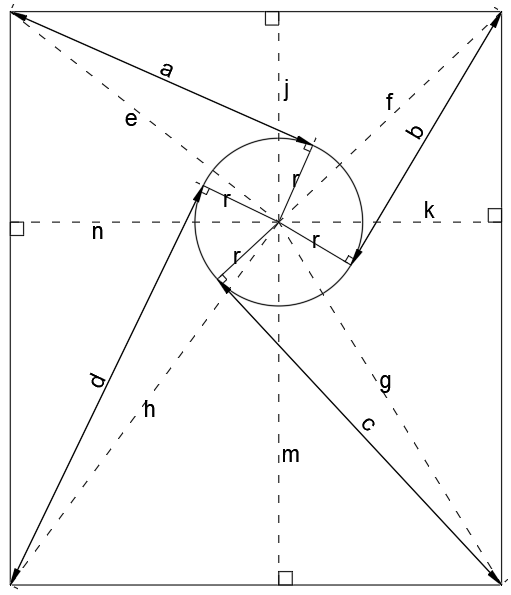The first thing we need to is to establish the length and width of the rectangle, let’s call them x and y respectively. We can make use of the fact that the small triangle above the 196 square is similar to the large triangle to the right of it. Since 14^2=196, the side length of the square is 14, and so:
(x-14)/14 = 14/(y-14)
(x-14)(y-14) = 196
xy-14(x+y)+196 = 196
But we already know that xy=882, as that is given in the question,
882 = 14(x+y)
x+y = 63
Knowing the sum and product of x and y we could solve as a quadratic, but I’m going to use the similar method of middle and difference. m is the middle of x and y, and is therefore 31.5, and d is the amount by which x is greater than m and y is less than m.
(m+d)(m-d)=882
m^2-d^2=882
d^2=m^2-882
d=10.5
And so therefore x and y are 42 and 21 respectively.
Now looking at the other half of the rectangle, the triangles surrounding the sloping square are also similar to the two in the lower half, and will have legs in the ration of 42 to 21, or 2 to 1.
Looking along the diagonal, if we call the side length of the sloping square ‘s’, we find that 2s + s + s/2 makes up the diagonal, which has an overall length of sqrt(42^2+21^2) = 21*sqrt(5).
So 3s/2 = 21*sqrt(5)
s = 6*sqrt(5)
The area of the sloping square is s^2, which is 180.













